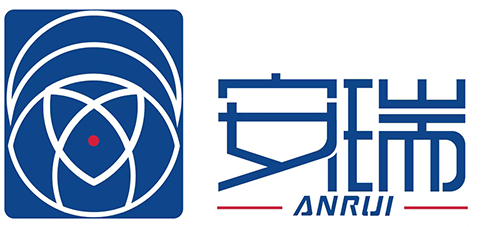Jun 09,2025
The Future of Hand Protection: Polyurethane Palm-Coated Gloves - Enhanced Safety and Comfort
The Future of Hand Protection: Polyurethane Palm-Coated Gloves
Table of Contents
Introduction to Polyurethane Palm-Coated Gloves
Understanding Polyurethane: The Material Revolutionizing Gloves
Key Benefits of Polyurethane Palm-Coated Gloves
Durability and Longevity
Superior Comfort and Fit
Enhanced Grip and Performance
App
The Future of Hand Protection: Polyurethane Palm-Coated Gloves
Table of Contents
- Introduction to Polyurethane Palm-Coated Gloves
- Understanding Polyurethane: The Material Revolutionizing Gloves
- Key Benefits of Polyurethane Palm-Coated Gloves
- Applications of Polyurethane Palm-Coated Gloves
- Choosing the Right Polyurethane Palm-Coated Gloves
- Maintenance and Care for Longevity
- Future Trends in Hand Protection Technology
- Conclusion
- FAQs about Polyurethane Palm-Coated Gloves
Introduction to Polyurethane Palm-Coated Gloves
In the ever-evolving landscape of hand protection, polyurethane palm-coated gloves have emerged as a game-changer. These gloves are specifically designed to provide not just safety but also comfort and performance in various work environments. As industries aim to enhance worker safety, the demand for sophisticated protective gear has significantly increased. This article aims to explore the cutting-edge features of polyurethane palm-coated gloves, highlighting their benefits, applications, and future implications in the field of hand protection.
Understanding Polyurethane: The Material Revolutionizing Gloves
Polyurethane is a versatile polymer that has gained popularity in various applications, including hand protection. Its unique properties make it an ideal candidate for glove production:
What is Polyurethane?
Polyurethane is a type of polymer composed of organic units joined by urethane links. It is known for its flexibility, durability, and resistance to abrasion, making it suitable for various industrial applications, especially in manufacturing gloves.
Why is Polyurethane Ideal for Gloves?
Polyurethane’s elasticity allows for a snug fit without compromising dexterity. Furthermore, its resistance to chemicals and moisture enables gloves made from this material to withstand harsh operating conditions, ensuring longevity and reliability.
Key Benefits of Polyurethane Palm-Coated Gloves
When it comes to hand protection, polyurethane palm-coated gloves offer unparalleled advantages:
Durability and Longevity
Polyurethane palm-coated gloves provide enhanced durability compared to traditional materials. Their resistance to wear and tear ensures that users can rely on them longer, reducing the frequency of replacements and contributing to cost savings over time.
Superior Comfort and Fit
The inherent flexibility of polyurethane allows these gloves to conform to the natural shape of the hand. This customized fit reduces fatigue during extended wear, making them an excellent choice for workers who require prolonged hand protection.
Enhanced Grip and Performance
With a textured palm coating, polyurethane gloves provide superior grip on various surfaces. This feature is particularly advantageous in environments where handling tools or materials safely is crucial, lowering the risk of accidents.
Applications of Polyurethane Palm-Coated Gloves
Polyurethane palm-coated gloves are employed across diverse industries due to their robust design and functionality. Here are some notable applications:
Construction Industry
In construction, workers face numerous hazards, from sharp objects to heavy materials. Polyurethane palm-coated gloves are ideal, providing the necessary protection while allowing the dexterity needed for precision tasks, such as handling tools or materials.
Manufacturing Sector
The manufacturing sector demands high-quality, durable gloves that can withstand repetitive tasks. Polyurethane palm-coated gloves excel here, offering excellent grip and resistance to abrasion, making them suitable for assembly lines and machinery operation.
Medical and Healthcare
In the medical field, hygiene and dexterity are paramount. Polyurethane palm-coated gloves are often used by healthcare professionals as they provide a barrier against contaminants while allowing for precise movements during examinations and procedures.
Choosing the Right Polyurethane Palm-Coated Gloves
Selecting the appropriate gloves is essential for maximizing safety and comfort. Here are some factors to consider:
Size and Fit
Ensure that the gloves fit snugly without being too tight. A proper fit enhances dexterity and comfort, crucial for tasks requiring fine motor skills.
Thickness and Coating
Different applications may require varying thicknesses of gloves. Consider the specific tasks and environments when choosing gloves with a suitable coating.
Durability Ratings
Look for gloves with high durability ratings, especially for demanding work environments. Quality certifications can indicate the glove's performance capabilities.
Maintenance and Care for Longevity
Proper maintenance of polyurethane palm-coated gloves can significantly extend their lifespan:
Cleaning
Most polyurethane gloves can be wiped clean with a damp cloth. For deeper cleaning, check the manufacturer's guidelines. Avoid using harsh chemicals that may degrade the material.
Storage
Store gloves in a cool, dry place away from direct sunlight. Proper storage helps prevent material degradation and maintains the gloves' integrity.
Future Trends in Hand Protection Technology
As technology advances, so do the materials and designs of hand protection gear. Here are some emerging trends:
Smart Gloves
The integration of technology into gloves is on the rise. Future developments may include smart gloves equipped with sensors to monitor hand movements and provide feedback to enhance worker safety.
Eco-Friendly Materials
Sustainability is becoming increasingly important. Innovations in biodegradable and eco-friendly materials for glove manufacturing are expected to gain traction in the future.
Conclusion
Polyurethane palm-coated gloves represent the forefront of hand protection technology, offering a blend of durability, comfort, and performance. As industries evolve, these gloves will continue to play a crucial role in ensuring worker safety. By understanding their benefits and applications, businesses can make informed decisions about their hand protection needs, ultimately fostering a safer working environment.
FAQs about Polyurethane Palm-Coated Gloves
1. What industries commonly use polyurethane palm-coated gloves?
Polyurethane palm-coated gloves are commonly used in construction, manufacturing, and healthcare industries due to their durability and comfort.
2. Are polyurethane gloves waterproof?
While polyurethane provides some water resistance, they are not fully waterproof. Their effectiveness varies based on the specific design and coating techniques used.
3. Can I machine wash polyurethane palm-coated gloves?
Most polyurethane gloves should not be machine washed. It is best to clean them with a damp cloth according to the manufacturer's guidelines.
4. How do I know what size gloves to purchase?
To determine the correct size, measure the circumference of your hand and refer to the manufacturer’s sizing chart. A proper fit is essential for comfort and safety.
5. Are there any allergens associated with polyurethane gloves?
Polyurethane gloves are generally hypoallergenic; however, individuals with specific sensitivities should consult the manufacturer or their healthcare provider before use.
The future of hand protection is bright with polyurethane palm-coated gloves leading the charge. As industries continue to prioritize worker safety, investing in quality protective gear becomes not just a necessity, but a commitment to ensuring a safe and productive working environment.
Polyurethane palm-coated protective gloves
Previous page
Previous page










